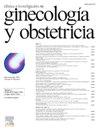如何进行胎儿神经超声检查:要点
IF 0.1
Q4 OBSTETRICS & GYNECOLOGY
Clinica e Investigacion en Ginecologia y Obstetricia
Pub Date : 2025-05-10
DOI:10.1016/j.gine.2025.101050
引用次数: 0
摘要
中枢神经系统先天性异常是最重要的先天性畸形之一,数量众多。它们是儿童致残的第二大原因,95%以上发生在没有已知风险的人群中。最有效的检测策略是区分两个级别的护理。第一阶段,基本超声检查,对所有孕妇进行,而第二阶段,详细胎儿神经超声检查,在根据一系列适应症选择的异常风险或因为检测到或怀疑异常的病例中进行。基础超声显示中枢神经系统异常。其目的是从轴、冠状面和矢状面对所有可接近和可识别的脑结构进行完整的形态学和生物特征多面分析,理想情况下通过经腹和经阴道通道。在这3个计划中,应该尝试评估相同的结构,假设每个计划所提供的不同视角所带来的限制。在进行GD手术时,应考虑适应症和胎龄,了解形态学模式,有GD颅内不同结构正常程度的参考表,并遵循科学学会提出的分类学。本文的目的是描述不同的平面,并为读者提供超声检测中枢神经系统最重要和最常见的畸形的关键点。本文章由计算机程序翻译,如有差异,请以英文原文为准。
How to perform a fetal neurosonography: Key points
Congenital anomalies of the Central Nervous System are one of the most important and numerous groups of congenital malformations. They constitute the second cause of disability in childhood and more than 95% occur in a population without known risk. The most effective strategy for its detection is to differentiate between 2 levels of care. The first level, the BASIC ULTRASONOGRAPHY, is performed on all pregnant women, while the second level, the DETAILED FETAL NEUROSONOGRAPHY, is performed in cases selected due to the risk of anomaly based on a list of indications or because an abnormality has been detected or suspected. CNS abnormality on basic ultrasound. Its purpose is to perform a complete morphological and biometric multiplanar analysis of all accessible and recognizable brain structures from the axial, coronal and sagittal planes, ideally through transabdominal and transvaginal access. In the 3 plans, an attempt should be made to evaluate the same structures, assuming the limitations posed by the different perspective provided by each of them. When performing it, it is essential to take into account the indication and gestational age, know the morphological patterns, have reference tables of the normality of the different intracranial structures for GD and follow the systematics proposed by scientific societies. The objective of this article is to describe the different planes and provide readers with the key points for the ultrasound detection of the most important and frequent malformations of the CNS.
求助全文
通过发布文献求助,成功后即可免费获取论文全文。
去求助
来源期刊

Clinica e Investigacion en Ginecologia y Obstetricia
OBSTETRICS & GYNECOLOGY-
CiteScore
0.20
自引率
0.00%
发文量
54
期刊介绍:
Una excelente publicación para mantenerse al día en los temas de máximo interés de la ginecología de vanguardia. Resulta idónea tanto para el especialista en ginecología, como en obstetricia o en pediatría, y está presente en los más prestigiosos índices de referencia en medicina.
 求助内容:
求助内容: 应助结果提醒方式:
应助结果提醒方式:


